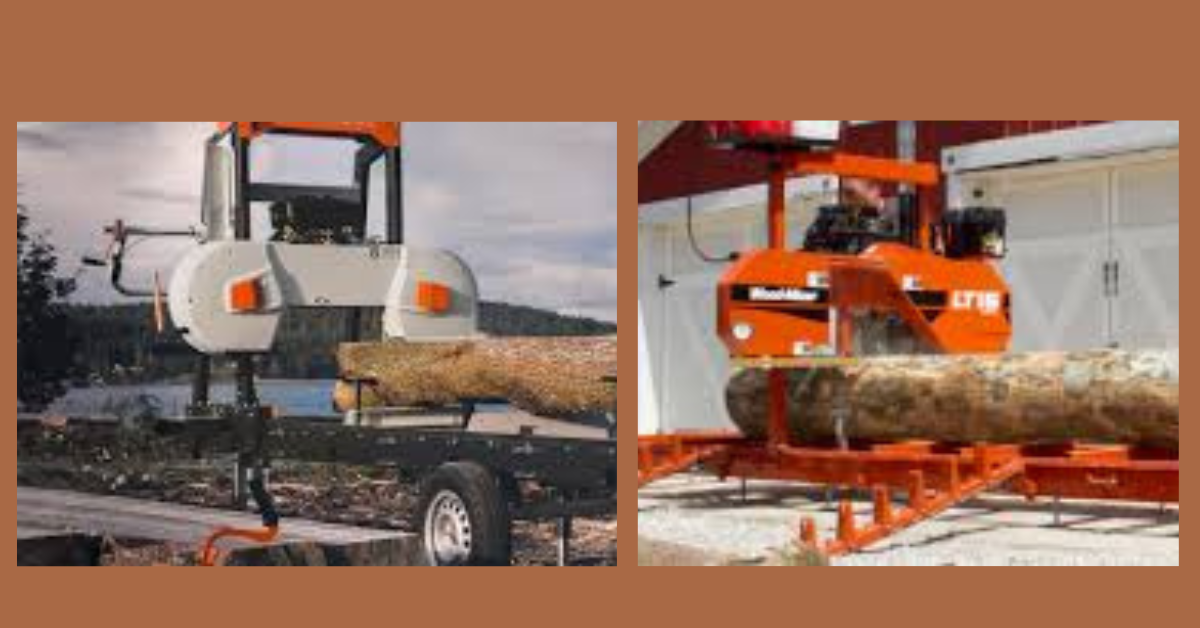Sawmills: An In-depth Guide to Their Role, Function, and Types

In this article, we will explore everything you need to know about sawmills, their history, types, functions, and importance in today’s economy.
1. What is a Sawmill?
A sawmill is a facility where logs are cut into lumber or other wood products. The primary function of a sawmill is to process raw wood by sawing it into specific sizes and shapes. Sawmills are critical for turning timber into products like beams, planks, boards, and sheets, which are essential materials in construction, manufacturing, and carpentry.
Traditionally, sawmills were powered by water, wind, or animals. Today, modern sawmills use advanced machinery and technology to efficiently process wood, dramatically increasing output while reducing labor intensity.
2. How Sawmills Work
The process of transforming raw logs into usable timber involves several steps, typically including:
- Log sorting and debarking: The first step is sorting the logs by size, species, and quality. Once sorted, the logs undergo debarking, where the outer bark is removed, often using mechanical bark peelers.
- Primary sawing: After debarking, the logs are passed through the primary sawing phase, where large saw blades cut them into rough boards or slabs.
- Edging and trimming: The rough-cut boards are then edged to remove irregularities and trimmed to the desired dimensions.
- Drying: The lumber is dried either through air drying or kiln drying to reduce moisture content, which makes it more stable and resistant to warping.
- Planing and finishing: The boards may be further planed to achieve a smooth surface, depending on the intended use.
- Grading and sorting: The finished lumber is graded based on quality and sorted into different categories for shipping and sale.
3. Types of Sawmills
Sawmills come in various types depending on their operation, scale, and the type of wood they process. Prominent types of sawmills:
A. Portable Sawmills
Portable sawmills are small, mobile units that can be transported to logging sites. These sawmills are ideal for smaller-scale operations and are popular among hobbyists, farmers, and smaller logging businesses. They are also used in remote areas where transporting logs to a large mill would be difficult.
B. Stationary Sawmills
Stationary sawmills are large, permanent facilities designed for high-volume production. These mills typically handle a continuous flow of logs and are equipped with advanced machinery to process significant quantities of wood efficiently.
C. Circular Sawmills
Circular sawmills utilize circular saw blades that rotate at high speeds to cut logs into lumber. These mills are capable of handling large logs and are often used in commercial sawmills due to their speed and reliability.
D. Band Sawmills
Band sawmills use a long, continuous band saw blade to cut logs. These mills are known for producing less waste and being more efficient with wood utilization, making them a popular choice for operations focused on maximizing yield from each log.
E. Chainsaw Mills
Chainsaw mills are the simplest type of sawmill, using a chainsaw to slice through logs. While not ideal for large-scale operations, chainsaw mills are commonly used for small projects, especially by individuals who need to process a small number of logs.
4. Modern Sawmill Technology
Technological advancements have revolutionized the sawmill industry, making it more efficient, safer, and environmentally friendly. Some of the key innovations in modern sawmills include:
- Computerized optimization: Sawmills now use computer-aided technology to analyze logs and determine the most efficient way to cut them, reducing waste and increasing yield.
- Laser-guided cutting: Lasers are used to guide saw blades with precision, resulting in more accurate cuts and improved product quality.
- Automated handling systems: Automated machinery can now move logs and lumber through the sawing process with minimal human intervention, increasing efficiency and safety.
- Sustainability initiatives: Many modern sawmills prioritize sustainability, using wood waste to generate energy, recycle by-products, and implement reforestation programs.
5. Sawmills and Environmental Impact
The environmental impact of sawmills has been a growing concern, particularly regarding deforestation, habitat destruction, and waste production. However, many sawmills today have adopted sustainable practices to minimize their ecological footprint.
- Sustainable forestry: Many sawmills source their logs from sustainable forests, where trees are replanted, and ecosystems are protected.
- Wood waste utilization: Sawdust, wood chips, and bark, which were once considered waste, are now used to produce products like particleboard, mulch, and bioenergy.
- Energy efficiency: Modern sawmills incorporate energy-efficient machinery and processes to reduce their overall energy consumption.
6. The Importance of Sawmills in the Economy
Sawmills are vital to the economy, especially in regions where forestry is a major industry. They provide jobs for thousands of workers in logging, transportation, milling, and related industries. In addition, sawmills support numerous sectors by supplying wood for construction, furniture making, paper production, and more.
Sawmills also contribute to local economies, particularly in rural areas, by providing employment opportunities and encouraging the development of infrastructure.
7. Safety in Sawmills
Safety is a top priority in sawmills due to the dangerous nature of operating heavy machinery and handling large logs. Common hazards include cuts, amputations, and falls, so workers must follow strict safety protocols.
Modern sawmills have implemented numerous safety measures, including:
- Protective equipment: Workers wear personal protective equipment (PPE), such as gloves, helmets, and safety goggles, to prevent injuries.
- Training programs: Sawmill employees receive extensive training in the safe operation of machinery and equipment.
- Machine safeguards: Saws and other equipment are equipped with safety features, such as automatic shut-offs and guards, to minimize accidents.
8. The Future of Sawmills
As technology continues to advance, the future of sawmills looks promising. Innovations in automation, sustainability, and product optimization will likely drive the industry forward. The increasing demand for wood products, particularly in construction and renewable energy, will ensure that sawmills remain a crucial part of the global economy.
Additionally, the emphasis on sustainable forestry practices and reducing environmental impacts will shape the future direction of the sawmill industry, ensuring that wood processing can continue without compromising the planet’s ecosystems.
Conclusion
Sawmills are a crucial link in the chain that transforms raw timber into essential wood products used in countless industries. As technology continues to evolve and sustainability becomes a priority, sawmills are likely to become more efficient and environmentally friendly, ensuring their continued relevance in the global economy.
FAQs
1. What is a sawmill used for?
A sawmill is used to cut logs into lumber, which can be used for construction, furniture making, and other wood-based products.
2. What types of sawmills are there?
There are several types of sawmills, including portable, stationary, circular, band, and chainsaw mills. Each type is suited to different scales and methods of operation.
3. How do sawmills impact the environment?
Sawmills can have a significant environmental impact, particularly in terms of deforestation and waste. However, many modern sawmills prioritize sustainability through responsible sourcing, waste reduction, and energy efficiency.
4. What safety measures are in place at sawmills?
Sawmills implement strict safety protocols, including the use of protective equipment, machinery safeguards, and employee training programs.





